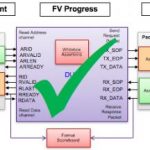Every SoC that connects to an analog sensor or device requires AMS (Analog Mixed-Signal) circuit simulation for design and verification, so this year at #54DAC the organizers at Synopsys hosted another informative AMS panel session over lunch time on Monday. What makes this kind of panel so refreshing is that the invited speakers… Read More
Accurate Power Sooner
Synopsys PrimeTime PX, popularly known as PT-PX, is widely recognized as the gold standard for power signoff. Calculation is based on a final gate-level netlist reflecting final gate selections and either approximate interconnect parasitics or final parasitics based on the post-layout netlist. The only way to get more accurate… Read More
An InFormal Chat
Any sufficiently advanced technology is indistinguishable from magic, as the saying goes. Which is all very well when the purpose is entertainment or serving the arcane skills of a select priesthood, but it’s not a good way to grow a market. Then you want to dispel the magic aura, make the basic mechanics more accessible to a wider… Read More
Webinar: Getting to Accurate Power Estimates Earlier and Faster
Power has become a very important metric in modern designs – for mobile and IoT devices which must live on a battery charge for days or years, for datacenters where power costs can be as significant as capital costs, and for increasingly unavoidable regulatory reasons. But accurate power estimation on a design must start from an … Read More
CDC Verification for FPGA – Beyond the Basics
FPGAs have become a lot more capable and a lot more powerful, more closely resembling SoCs than the glue-logic we once considered them to be. Look at any big FPGA – a Xilinx Zynq, an Intel/Altera Arria or a Microsemi SmartFusion; these devices are full-blown SoCs, functionally different from an ASIC SoC only in that some of the device… Read More
Polishing Parallelism
The great thing about competition in free markets is that vendors are always pushing their products to find an edge. You the consumer don’t have to do much to take advantage of these advances (other than possibly paying for new options). You just sit back and watch the tool you use get faster and deliver better QoR. You may think that… Read More
Quantifying Formal Coverage
Verification coverage is a tricky concept. Ideally a definition would measure against how many paths were tested of every possible path through the complete state graph, but that goal is unimaginably out of reach for any typical design. Instead we fall back on proxies for completeness, like hitting every line in the code. This … Read More
EDA CEO Outlook 2017
A long standing tradition has returned to EDA: The CEO Outlook sponsored by ESDA (formerly EDAC) which alone is worth the price of membership! Not only do you get a free meal, the event included quality networking time with the semiconductor elite. In the past, financial analysts moderated this event holding the CEO’s feet to the… Read More
Webinar: Getting to Formal Coverage
Facing rapidly growing challenges in getting to respectable coverage, designers have been turning more and more to formal verification, not just to plug gaps but increasingly to take over verification of significant components of the testplan. Which is great, but at the end of the day any approach to verification must be measured… Read More
SNUG and Robots
I got an invite to the SNUG (Synopsys User Group meeting) keynotes this year. I could only make it to the second keynote but what a treat that was. The speaker was Dr. Peter Stone, professor and chair of CS at UT Austin. He also chaired the inaugural panel for the Stanford 100-year study on AI. This is a guy who knows more about AI than most… Read More











